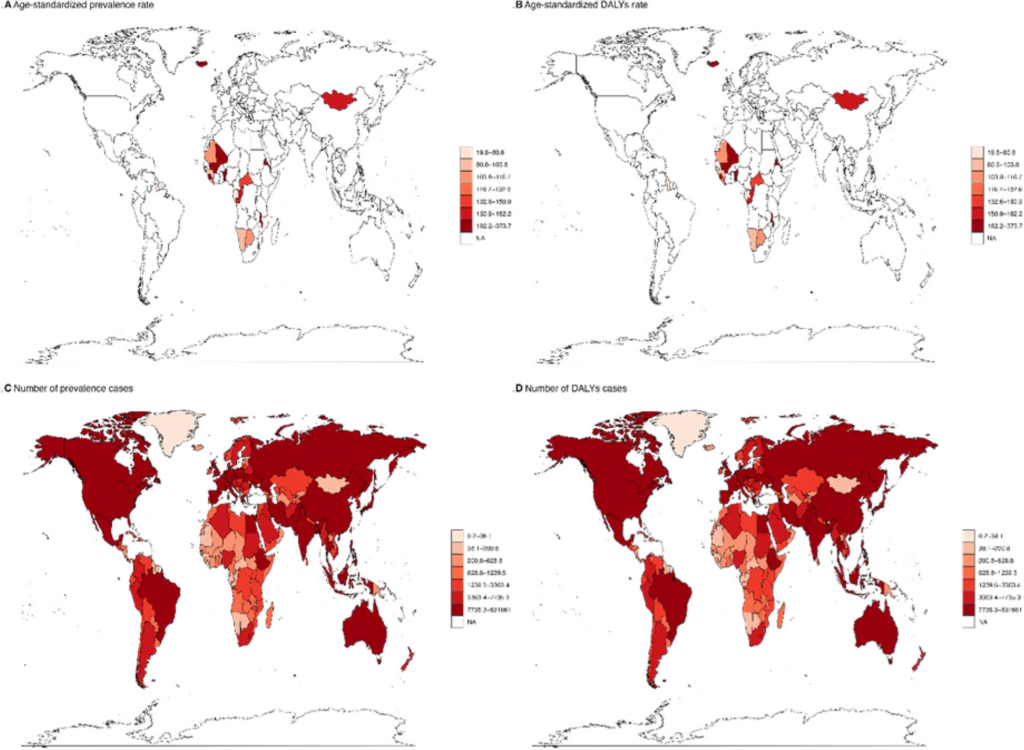Background Leukemia, a group of malignant tumors, has been a significant public health concern due to its high incidence and mortality rates. This study aimed to provide an in-depth analysis of the global leukemia burden from 1990 to 2021 using the Global Burden of Disease (GBD) database, focusing on trends in incidence, mortality, and Disability-Adjusted Life Years (DALYs) across different regions, genders, and age groups including forecasting future trends. Methods Data were sourced from the GBD study, utilizing the Global Health Data Exchange (GHDx) query tool. We employed descriptive, trend, cluster, and forecasting analyses using age-standardized rates (ASRs) and the Estimated Annual Percentage Change (EAPC) to quantify changes over time. Hierarchical clustering and forecasting models, including ARIMA and Exponential Smoothing (ES), were utilized to predict future trends. Notably, ARIMA and ES smoothing parameters were meticulously identified and estimated. Results The analysis of global leukemia burden from 1990 to 2021, as reflected by DALYs, indicates a downward trend, with the number of DALYs estimated to have decreased from 578,020 (401,241–797,570) in 1990 to 302,902 (206,475–421,952) in 2021, corresponding to an EAPC of -0.94 (-1.01—-0.88). Notably, it is important to highlight that there is variability in these estimates across different regions and demographic groups, which should be interpreted with caution due to potential data limitations. High-income regions generally showed a decreased leukemia burden, while some middle- and low-income countries exhibited an opposite trend. Males displayed higher leukemia incidence, mortality, and DALY rates compared to females. The oldest age groups, mainly those aged 95 and above, experienced the most significant changes, with the highest EAPC observed in this demographic. Geographical and Socio-demographic Index (SDI)–based analyses further highlighted the heterogeneity in leukemia burden. Additionally, forecasting models project a continued decrease in leukemia burden, emphasizing the importance of ongoing public health strategies. Conclusion The study indicates overall progress in reducing the leukemia burden at a global level due to medical advancements. However, specific regions and demographic groups, particularly males and the elderly, continue to face challenges. Socioeconomic status significantly impacts healthcare outcomes, with a need for resource distribution and healthcare system strengthening in low-income areas. The findings call for nuanced public health strategies tailored to socioeconomic contexts and sustained research and healthcare infrastructure efforts.Read More


